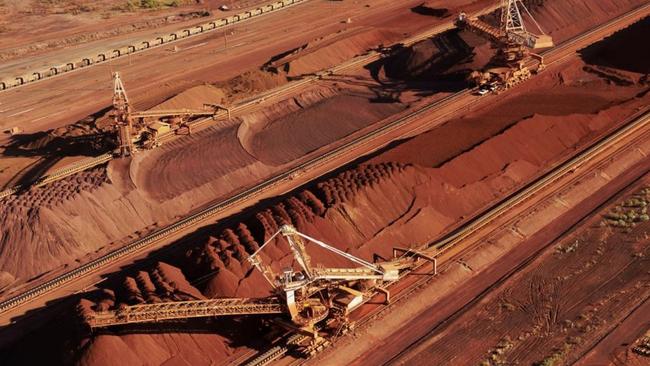Trade spat with China will have long-term consequences

If Australia is going to move confidently beyond the pandemic we need to get to grips with the long-term consequences of today’s decisions. We also can’t continue to misread the practical realities facing some of our biggest export markets.
The latest example of our obsession with short-run thinking followed the most recent monthly briefing by China’s super economic ministry, the National Development and Reform Commission. The agency talked about the need to raise domestic production, find additional sources of supply and undertake more overseas exploration.
It has been interpreted by some as the latest Chinese government move to punish Australia in the ever-heightening trade feud.
Headlines like “China to step up domestic iron ore mining in fresh swipe at Australia” met increasingly anxious readers in Australia. This interpretation is made in the febrile and toxic environment of the Australia-China relationship, where every word and every action is filtered through a retaliatory lens.
As much as Beijing dislikes the Morrison government, and resents the fact that Australians are enjoying another massive windfall from the soaring iron ore prices, it’s the short-term economics, not politics that’s heavy in the minds of Chinese policymakers. Soaring commodity prices are piling pressure on China’s construction, machinery and automobile industries, which are key pillars of the Chinese economy.
China’s level of concern was laid out this week when the Chinese Premier Li Keqiang convened a special session of the State Council, the cabinet, to discuss the issue of skyrocketing commodity prices and its inflationary impact on the Chinese economy.
“We need to be extremely vigilant regarding the negative impact of rapidly increasing commodity prices,” Premier Li said.
“We need to ensure adequate supply of commodities, prevent unreasonable price escalation and stop the transmission to consumer prices.”
The Chinese government is introducing a raft of policies such as scrapping tariffs on imported iron and scrap metals, eliminating tax rebates for steel product exports, and increasing domestic supply. All these measures are designed to put downward pressure on iron ore prices.
Chen Derong, the chairman of Baowu Steel, the world’s largest steelmaker, expressed his pain at the beginning of 2020 at the China Steel and Iron Association annual conference.
He said the most painful challenge for the industry was the rapid increase in iron ore prices – BHP, Rio Tinto, Fortescue and Vale made more additional profit than the combined profit of the Chinese steel industry, which produces more than 50 per cent of the global output.
“China imported 1 billion tonnes of iron ore in 2019. For every $US30 increase in price per tonne, that translates to a $US30 billion price increase, equivalent to 210 billion RMB, which is more than the combined profit of the entire steel industry,” he said
If Chen’s experience in 2019 was painful, the price boom in the latter part of 2020 and the first half of 2021 must be excruciating.
In April 2020, the delivered spot price of 62 per cent iron ore was $US84.73 per tonne, it’s now closer to $US180.
China imported 1.17 billion tonnes of iron ore in 2020, so a $US100 per tonne price increase increases its annual iron ore bill by $US117 billion (close to four times the profits of China’s steel industry in 2019).
The idea that China could hurt Australia by expanding domestic production also does not stack up.
In reality, most of China’s iron ore mines are relatively small, located away from major coastal steel demand, and have low iron content and high impurities.
The undesirable characteristics of China’s tapped iron ore resources means that their producers operate, on average, at the highest cost globally. And given that the iron ore market runs on a marginal price mechanism, if lower cost iron ore is found in China, it will simply push higher cost Chinese miners out of the market, not the large Australian miners which occupy the other end of the cost curve.
And we should not underestimate the time it takes to find and develop new iron ore deposits and associated infrastructure, even for the Chinese who are famous for their ability to build at hyper-speed and astonishing scale.
All this means that our focus is wasted on the short-run implications. It’s the long run that we should busy ourselves understanding.
In the long run, we will come to understand how much short-term politicking has incentivised the Chinese state to support the development of projects that would otherwise be unable to secure financing, projects like the market-moving Simandou mine in Guinea.
For us, the stakes couldn’t be higher. Australia’s iron ore exports are expected to be worth around $5300 per capita this financial year. Australia’s economic strength through the GFC and Covid only highlight that our nation’s fortune is intertwined with mineral riches.
Dr Luke Hurst and Peter Cai are Partners at Lydekker, a boutique Asia strategy and market advisory firm.






